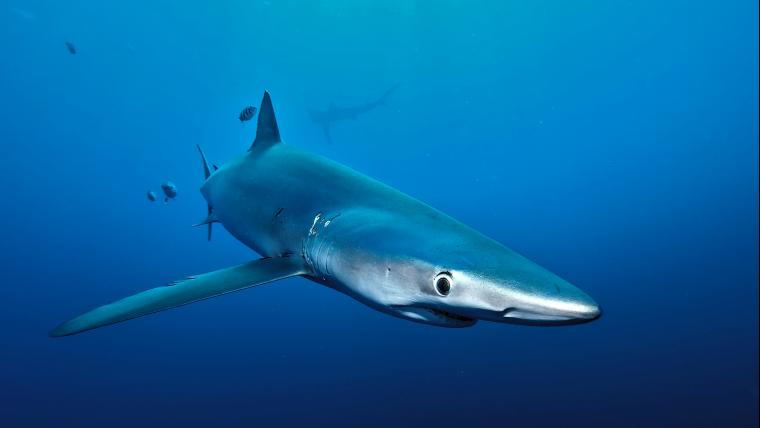
How to keep blue sharks out of soup bowls and harm’s way
The slender blue shark travels thousands of kilometres in search of food and prospective mates. Migratory by nature, they have been known to traverse coastlines as far as North to South America. They are widespread and found off every continent except Antarctica, making them an easy target for capture. Each year, up to 20 million blue sharks are caught and killed for the shark fin trade.
These sharks have extended pectoral fins jutting from either side of their body, which allow them to glide on oceanic currents and preserve energy. Hardly anything escapes a blue shark’s notice – they have sensitive electroreceptors under their skin that can detect a heartbeat kilometres away. Named for the signature hue of their skin, they appear as two different colours when seen from above or below. Blue on top and crisp white on the underbelly, the toothy fish blend in to the deep waters they prefer to inhabit. But this camouflage is not enough to stop them from being hunted and caught in both legal and illegal fishing operations.
Shark fin soup is a delicacy in some Asian nations. The practice of harvesting fins is unmonitored in several countries and restrictions are difficult to enforce without global cooperation. Mutilated sharks are left to bleed out or be picked off by scavenging creatures when thrown back in the water. Commercial fishing also adds to the toll taken by blue sharks. These animals often end up as bycatch; collateral damage wreaked by longline fishing charters. Entangled in line or hooked mistakenly, blue sharks are at the peril of unsustainable behaviour.
Without concentrated and unified efforts to regulate the shark fin trade and limit bycatch, hope for the blue shark will dwindle. If global initiatives and policy makers come together, we can keep the blue shark cruising free from harm.
Footage by Severin Pöhlmann was used in the creation of this film.




















Please sign in to leave a comment